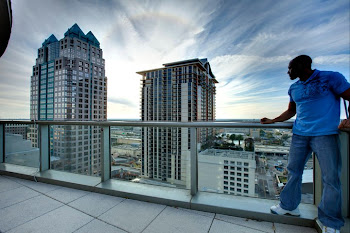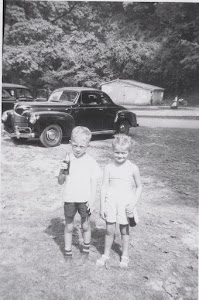 |
| from l Boo Hong, R J Lemieux, Ken Schroeder, Wilf, unknown, Gordon Bolduc,Rita Morin |
Wilf served as the township's deputy clerk for 22 years, and previously had been the editor of the Chapleau Post, where his father, Arthur Simpson had been the editor and publisher for many years.
He was also very well known for the Wilf Simpson Orchestra which played at countless number of dances in Chapleau, and was also a member of other musical groups.
After receiving a photo recently from Vince Crichton of Wilf playing with a Chapleau High School orchestra, with the members attending the school at the same time I did, I reread Wilf's profile, last published in 1977, where he shares his observations on the people, life and times of the community from its beginnings in 1885.
Wilf notes that the community was named after Sir Joseph Adolphe Chapleau who had served as prime minister of Quebec, secretary of state for Canada and Lieutenant Governor of Quebec.
He writes that one of the first uses of the Canadian Pacific Railway was in the movement of troops west to quell the Riel rebellion. At this time, "the steel had not been laid past Missanabie, some 65 miles west of Chapleau and it was necessary for the troops to detrain at Missanabie and move the guns and equipment across the ice on Dog Lake and entrain on another train to continue their journey west".
He added that some of the equipment went through the ice and in 1977 it was believed there were still some relics to be found on the bottom of Dog Lake.
Wilf refers to Chapleau as a "robust community" before the gold rush that brought Timmins and the Porcupine area into prominence. A fascinating anecdote, Wilf told, at least to me, was the story of Robert J. Renison, a young Anglican priest who later became bishop of the Diocese of Moosonee, referring to Chapleau as the only "window" of the north. It was necessary for miners, trappers and surveyors to "trek through the bush to Chapleau to receive or mail letters and to use the modern railway facilities to send telegrams" after 1885 when the CPR arrived in Chapleau.
He also noted that many of Chapleau's First Nations citizens are descendants of those who brought their families "on the arduous canoe trip from James Bay up to Chapleau via the Albany waterway. It may seem strange to some when I say 'up' to Chapleau but the waters of the Chapleau River flow north to Hudson Bay".
Chapleau also played a leading role in the construction of the Grand Trunk Railway, now Canadian National. When the right of way was being cleared and road bed being made ready, food and materials were shipped to Chapleau on the CPR. Wilf explains that the materials were unloaded at Chapleau and from there shipped to Elsas in barges and boats -- adding that "the route is still open and makes a fine canoe trip" with excellent fishing along the waterway.
Wilf writes that "isolation plagued Chapleau for over half a century" as except for the CPR there was no way in and out --- except of course by the waterways!
However, he writes about Arthur Grout and Earle Sootheran chatering a plane to fly out to the Goose River, catch a mess of speckled trout and present it to the steward on the Royal Train carrying King George VI and Queen Elizabeth on their Royal Tour on May 24, 1939. (As an aside, I just read this morning that the Lethbridge Hurricanes of the Western Hockey League, rivals of the Kootenay Ice from where I live in Cranbrook, presented season tickets to Prince William, their great grandson, and his wife Kate for the upcoming season.)
Wilf writes that it may be of some interest to know that in those years when cars were shipped to Chapleau on the CPR as there was no highway until 1949, Chapleauites going on vacation, would ship their cars to Sudbury, and off they went from there.
"The cost by freight on a flat car was less than $100.00. A small thing -- but not so small when one considers the CPR excursion fare to Toronto was $8.55 return. Passengers were welcomed with open arms in those days".
"The cost by freight on a flat car was less than $100.00. A small thing -- but not so small when one considers the CPR excursion fare to Toronto was $8.55 return. Passengers were welcomed with open arms in those days".
By 1977, when Wilf wrote his final profile, Chapleau was no longer isolated, and was known as the "Crossroads of the North" with highways linking the community to the outside world. (There was also daily air and bus service and the passenger trains were still running.)
Chapleau boasted a "fine shopping area" a movie theatre, two hotels and five motels, and an "excellent safe supervised beach and playground".
Wilf writes that the 1970s "saw more changes in the face of Chapleau than any years in its history and "the trend to tear down and renew" was continuing. Gone were the old CPR station and the large storage ice houses, the old "Horseshoe" bridge, the old Chapleau High School, the Sisters of St Mary Convent, Sacred Heart school, YMCA and annex, part of the CPR shops facing Lorne Street, the old firehall, town hall and town garage, the Chapleau Memorial Community Arena and Lady Minto Hospital.
In the same period, between 1966 and 1978, the new physical face of Chapleau included a new hospital, separate schools, low rental housing, high school, bridge and overpass, water plant, Chapleau Recreation Centre, Chapleau Civic Centre, Cedar Grove Lodge for Senior Citizens and a new golf clubhouse as well as a new CPR station. A housing development also was well underway in the Planer Area and planning for the new bridge and road to that area started as were those for a new sewage treatment facility. The Chapleau Municipal, now Gene Bernier Airport, was in use, and by 1979, the runway had been extended.
"It is now possible to have lunch in Chapleau and dinner in downtown Toronto after a leisurely flight...", Wilf wrote.
He told his readers that "Chapleau is a friendly town. You will get a friendly 'Hi' on the Main Street from someone you never saw before. Our people are eager to help the visitor.. and the northern air and waters are yours to enjoy..."
My thanks to Joy (Evans) Heft and Michael and Alison (McMillan) McMullen for making available a copy of Wilf's profile and to Vince Crichton for the photo. My email is mj.morris@live.ca



No comments:
Post a Comment